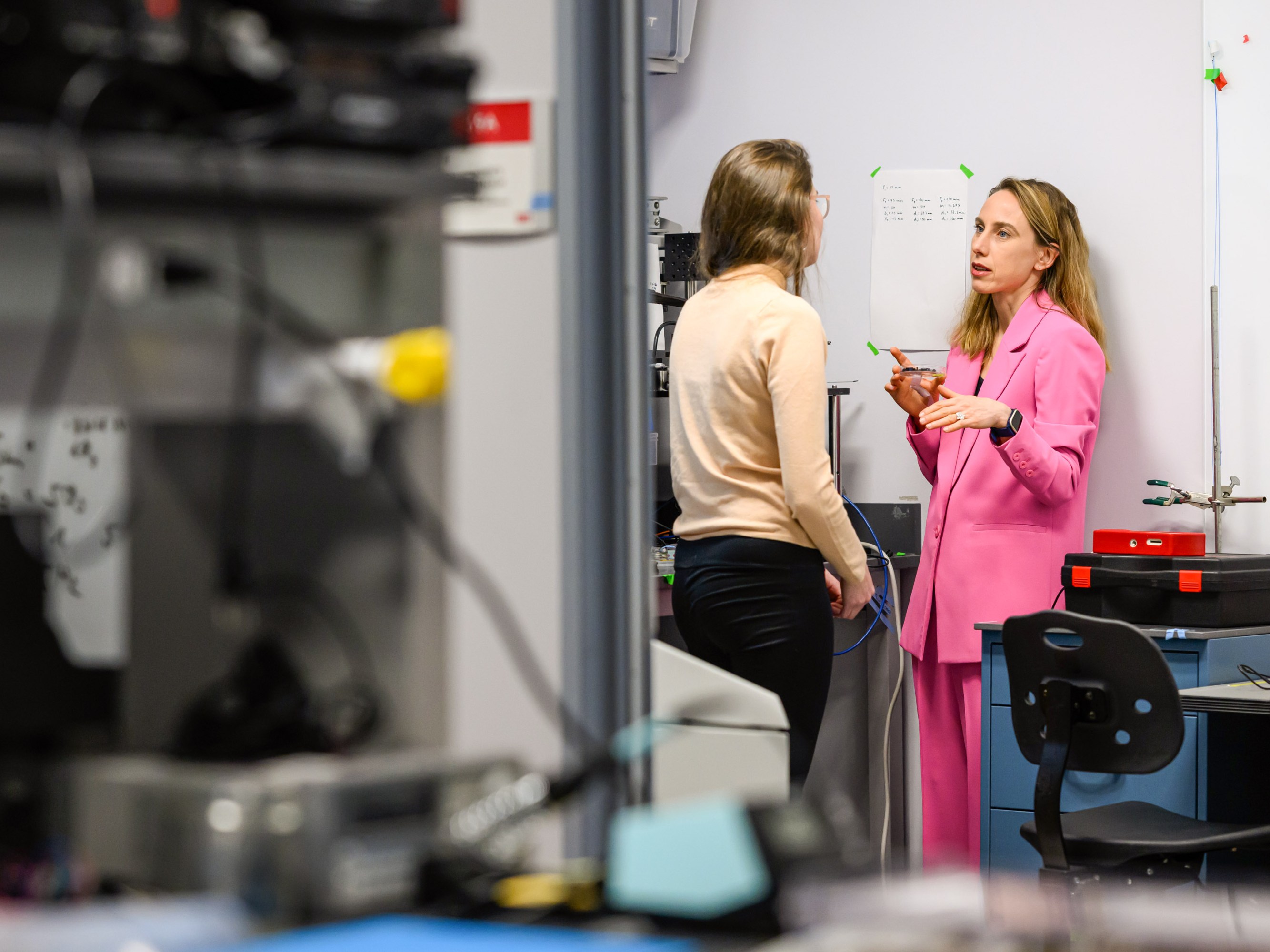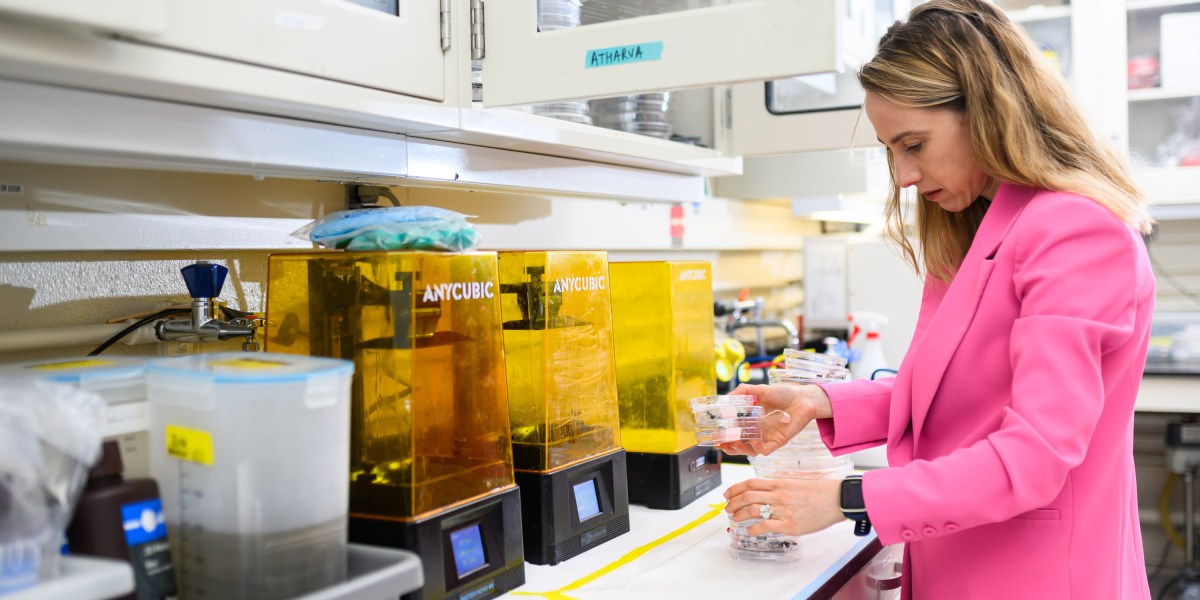“I wanted to work on something that didn’t exist”
Mice “would normally eat ferociously” when given access to food after fasting. “But if you stimulate those cells in the gut, they would feel full.”
Together they developed a way to distribute microelectronic components—LEDs for optogenetic stimulation, temperature sensors, and microfluidic channels that can deliver drugs, nutrients, and genetic material—along the fiber by essentially creating a series of pockets to contain them. Grad student Atharva Sahasrabudhe put in countless hours to make it happen and optimized the process with the help of technician Lee Maresco, Anikeeva says. Then, with Anantha P. Chandrakasan, dean of MIT’s School of Engineering, the Vannevar Bush Professor of EECS, and head of MIT’s Energy-Efficient Circuits and Systems Group, the team designed a wireless, battery-powered unit that could communicate with all those components.
The result was a fiber, about half a millimeter by one-third of a millimeter wide, made out of a rubbery material that can bend and conform to a mouse’s gut yet withstand its harsh environment. And all the electronic components housed within it can be controlled wirelessly via Bluetooth.
“We had all the materials engineers, and then we collaborated with our wireless colleagues, and we made this device that could be implanted in the gut. And then, of course, similar principles can also be used in the brain,” Anikeeva explains. “We could do experiments both in the brain and the gut.”

GRETCHEN ERTL
In one of the first experiments with the new fibers, Anikeeva worked with Bohórquez and his team, who had determined that sensory cells in the GI tract, called neuropods, send signals to the brain that control sensations of satiety. Using mice whose cells are genetically engineered to respond to light, the MIT and Duke researchers used the specialized fibers to optically stimulate these cells in the gut.
“We could take mice that are hungry, that have been fasting for about 18 hours, and we could put them in a cage with access to food, which they would normally eat ferociously,” Anikeeva says. “But if you stimulate those cells in the gut, they would feel full even though they were hungry, and they would not eat, or not as much.”
This was a breakthrough. “We knew that the technology works,” she says, “and that we can control gut functions from the gut.”
Next Anikeeva’s team wanted to explore how these neural connections between the gut and the brain can influence a mouse’s perception of reward or pleasure. They put the new fiber into the area of the brain where reward perception is processed. It’s packed with neurons that release dopamine—the “happy hormone”—when activated.
Then they ran tests in which mice had a choice between two compartments in a cage; each time a mouse entered a particular one, the researchers stimulated its dopamine neurons, causing the mouse to prefer it.

